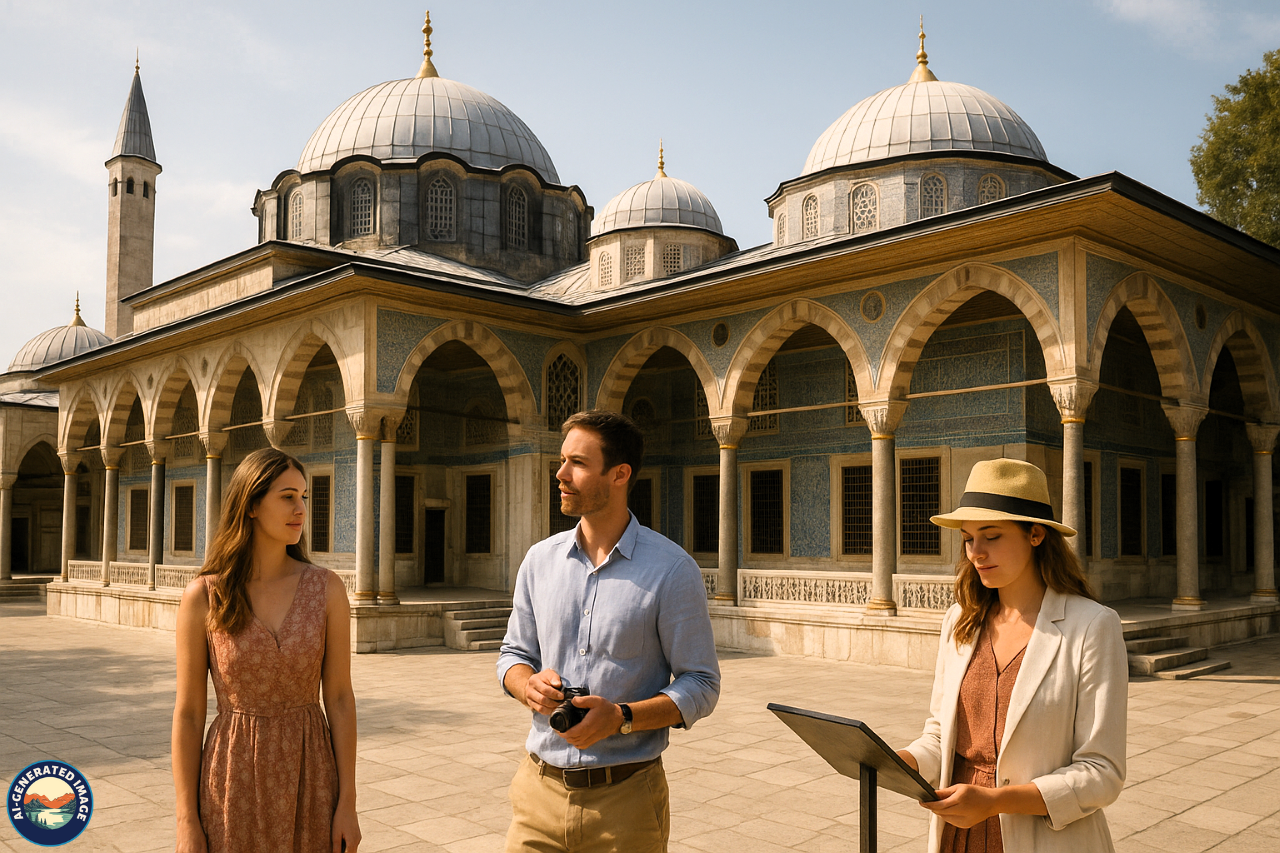Introduction
Perched on a scenic hilltop where the Bosphorus, the Golden Horn, and the Sea of Marmara converge, Topkapi Palace is one of Istanbul’s most iconic historical landmarks. Once the beating heart of the mighty Ottoman Empire, this majestic complex served not only as the sultans’ residence but also as the center of politics, religion, and culture for more than four centuries.
Today, it stands as a monumental museum, welcoming millions of visitors each year who seek to experience the grandeur of Ottoman life. From dazzling treasures to sacred relics, secretive harems to serene courtyards, Topkapi Palace offers an unparalleled glimpse into an era defined by power, luxury, and tradition.
Historical Background
Establishment and Early Development
Following the Ottoman conquest of Constantinople in 1453, Sultan Mehmed II—known as Mehmed the Conqueror—initiated the construction of a new royal residence to reflect the empire’s rising glory. Building commenced in 1459, and the palace was completed by 1478.
Topkapi’s location at the tip of the historical peninsula allowed for a strategic view over key waterways, reinforcing its importance as a defensive and ceremonial site. Unlike symmetrical European palaces, Topkapi developed organically over time, resulting in a diverse and layered architectural style.
The Ottoman Powerhouse
Topkapi served as the royal seat and administrative core of the Ottoman Empire from the late 15th century to the mid-19th century. It was home to the sultan, his family, viziers, officials, and servants, forming a self-contained city governed by its own rules and customs.
Diplomatic affairs, imperial edicts, military campaigns, and cultural patronage all flowed through the palace. Life within these walls was dictated by protocol and tradition, with each section playing a role in governance, spirituality, or daily living.
Conversion into a Public Museum
By the 1800s, Topkapi was no longer the preferred residence of the royal family, who moved to the more modern Dolmabahçe Palace. With the fall of the Ottoman Empire and the rise of the Republic of Turkey, the palace was repurposed.
In 1924, under the leadership of Mustafa Kemal Atatürk, Topkapi Palace was transformed into a museum. Since then, it has preserved some of the most significant relics, manuscripts, and royal collections from Ottoman history and remains one of Istanbul’s most treasured heritage sites.
Architectural Layout and Complex Design
Covering over 700,000 square meters, Topkapi Palace is not a single structure but a large compound made up of pavilions, halls, gardens, and courtyards. Its design reflects the evolution of Ottoman architecture through the centuries.
The Four Distinct Courtyards
First Courtyard (The Court of the Janissaries)
This outermost courtyard was open to the public and included functional buildings such as the Hagia Irene Church, the royal mint, and the bakery. It served as the entry point for guests and petitioners.
Second Courtyard (The Divan Square)
Access to this courtyard required permission and was limited to officials and palace personnel. Key structures here include the Imperial Council Chamber, the palace kitchens, and the stables. This area handled daily governance and logistics.
Third Courtyard (The Inner Palace)
This courtyard was strictly reserved for the sultan and his inner circle. It contained the Audience Hall, the Enderun Library, and the School of the Pages, where elite students were trained for imperial service.
Fourth Courtyard (The Private Garden Area)
The most secluded part of the palace, this courtyard featured lush gardens, ornate pavilions, and scenic terraces overlooking the Bosphorus. It was designed for the sultan’s leisure and personal contemplation.
Influences and Decorative Styles
Topkapi’s visual identity is shaped by Islamic aesthetics, Ottoman craftsmanship, and subtle traces of Byzantine influence. Decorative elements include hand-painted Iznik tiles, ornate wooden ceilings, and gilded calligraphy. Unlike European palaces that emphasize grandeur from the outside, Topkapi’s beauty is revealed in its interiors and intricacies.
Many of the palace’s structures were added or remodeled over time, especially during the reigns of Sultan Suleiman the Magnificent and Ahmed III. The result is an eclectic yet harmonious ensemble reflecting centuries of imperial history.
Highlights of Topkapi Palace
The Enigmatic Harem
One of the most intriguing sections of the palace is the Harem, which housed the sultan’s mother, wives, concubines, children, and eunuchs. This private wing was governed by strict rules and had its hierarchy and politics.
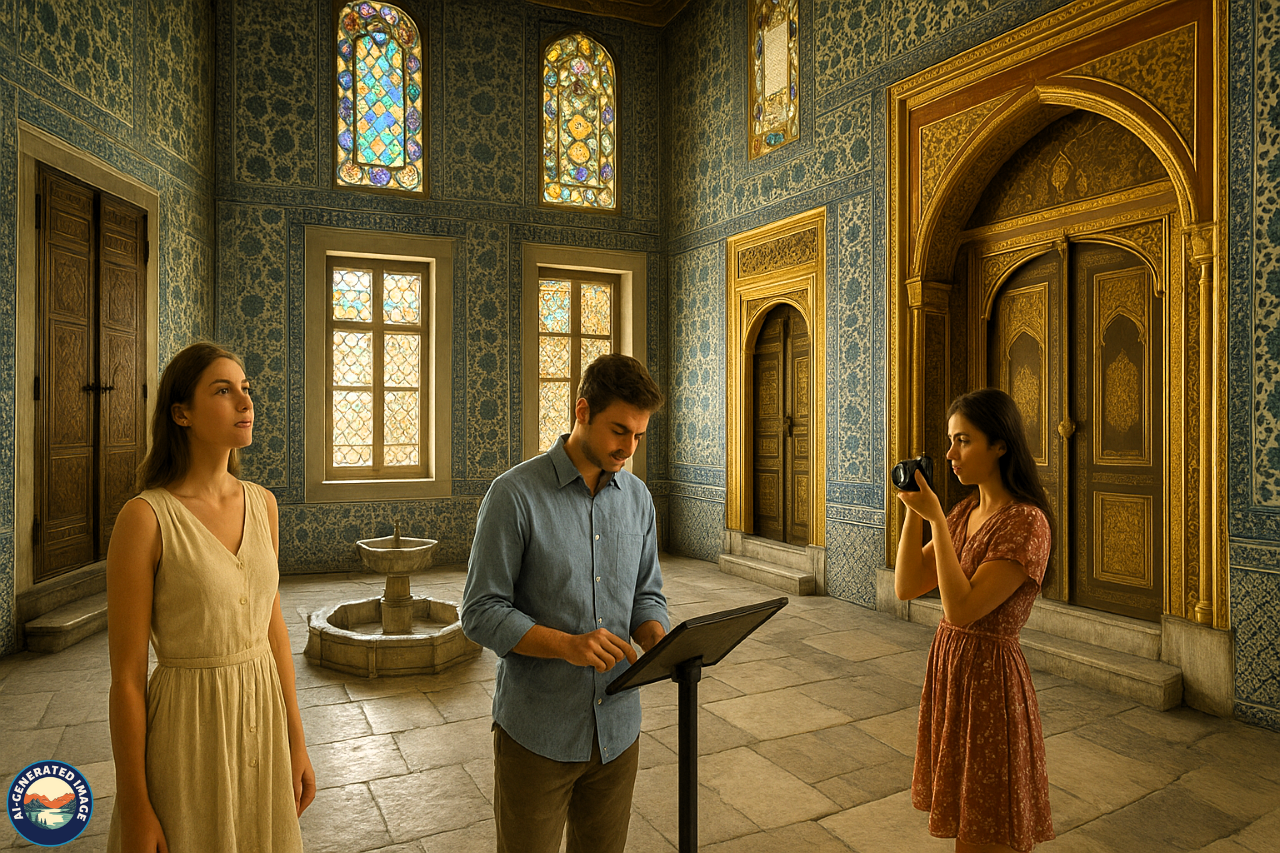
Visitors can explore a maze of over 40 rooms, including elaborately tiled chambers, private apartments, and marble courtyards. The opulence and mystery of this space offer insight into the inner workings of Ottoman court life.
The Imperial Treasury
A visit to Topkapi is incomplete without witnessing the opulent Imperial Treasury. This collection features ceremonial arms, imperial armor, jewel-encrusted thrones, and world-renowned gems.

Among the most remarkable pieces are:
-
The Topkapi Dagger, adorned with massive emeralds and a hidden compartment.
-
The Spoonmaker’s Diamond, weighing 86 carats and surrounded by a halo of smaller diamonds.
-
The Throne of Ahmed I, made of ebony and inlaid with mother-of-pearl.
These artifacts not only symbolize wealth but also showcase the artistic excellence of the empire.
The Sacred Relics Pavilion
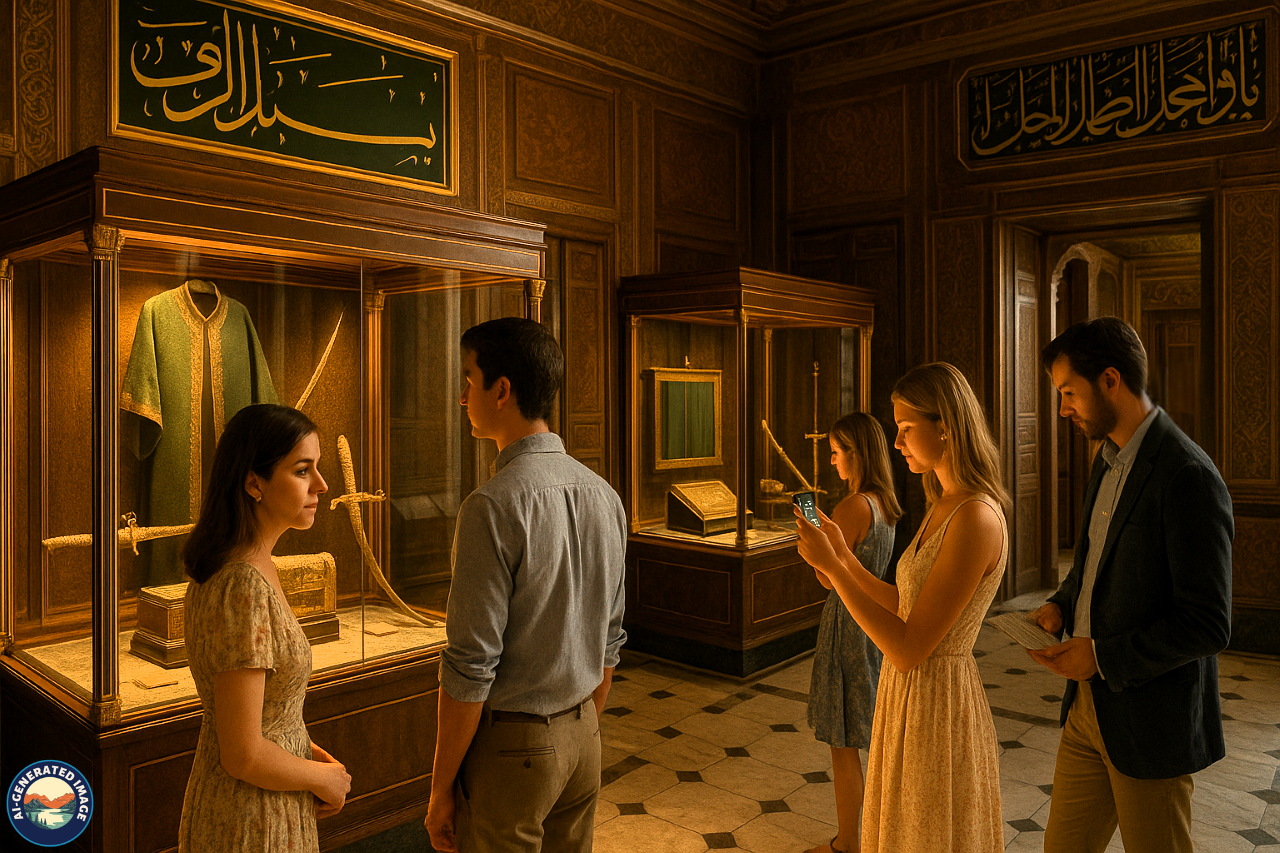
This sacred chamber houses some of the most revered Islamic relics, including:
-
The cloak and sword of the Prophet Muhammad
-
The staff of Moses
-
The swords of the Prophet’s companions
The items are displayed in subdued lighting, and verses from the Quran are recited continuously, enhancing the spiritual ambiance of the space.
The Imperial Council Hall
The Divan Chamber was where senior officials convened to discuss matters of state. The sultan could listen in from a screened gallery without being seen. The room is richly decorated, featuring a domed ceiling, Islamic motifs, and carved wood panels.
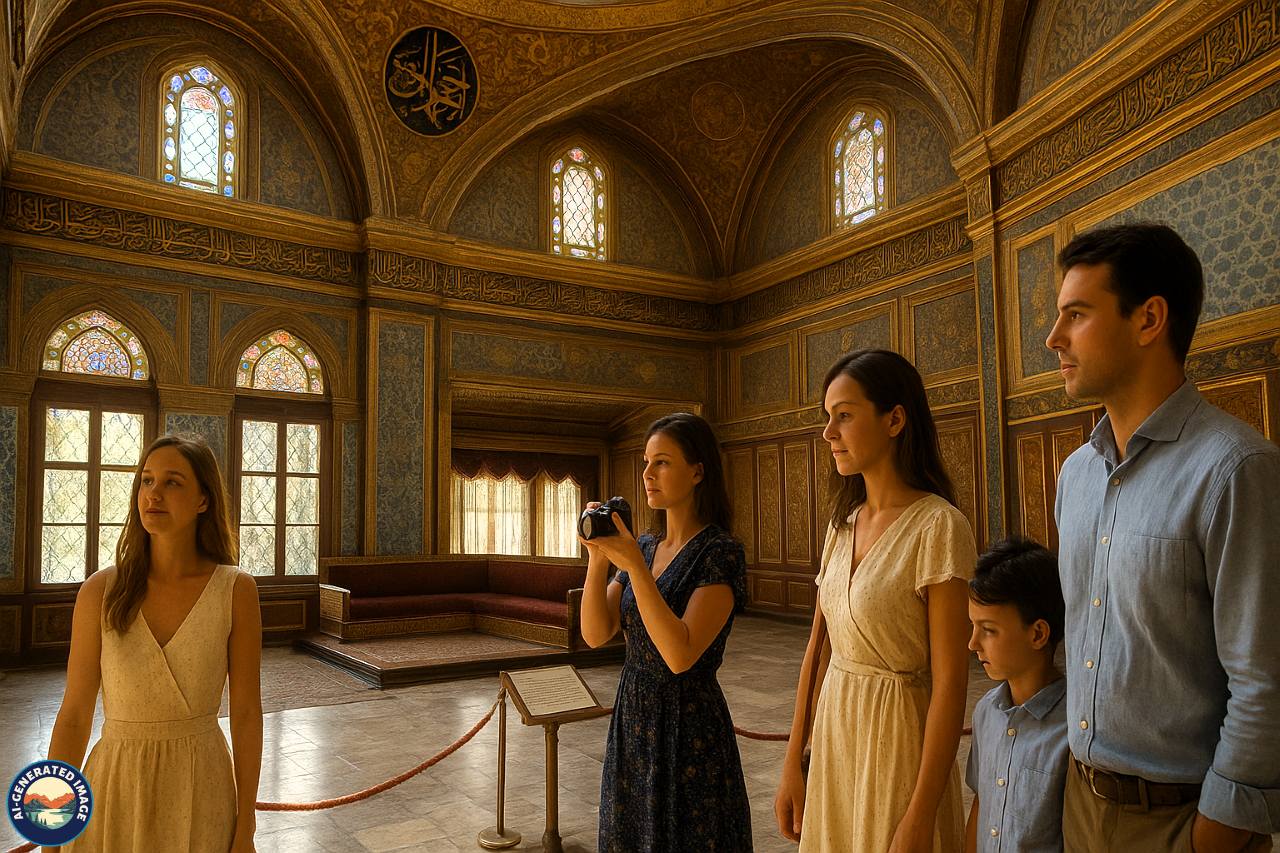
Library of Sultan Ahmed III
This 18th-century library was built to support education within the palace. It contains beautifully preserved manuscripts and is a prime example of Ottoman architectural refinement, with its domed roof and symmetrical design.
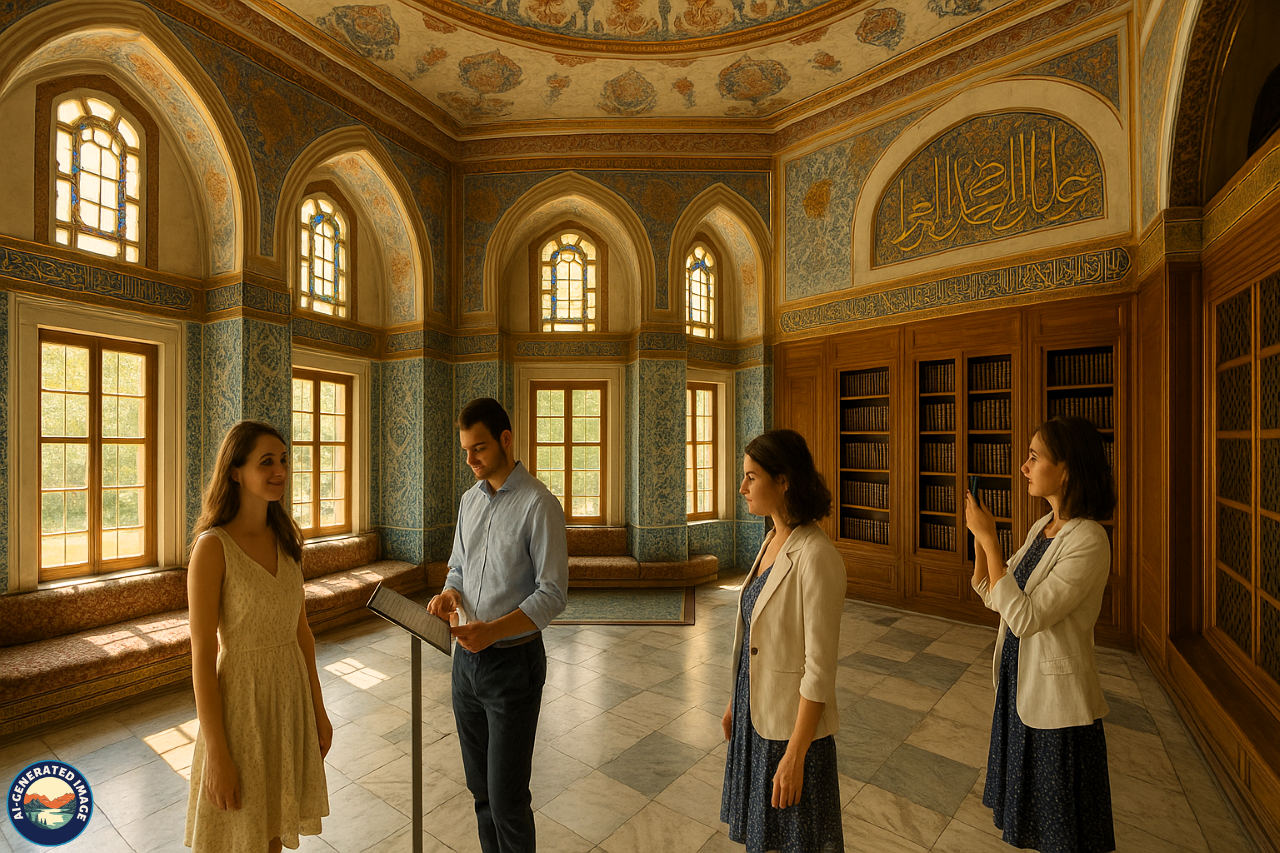
Terraces and Scenic Gardens
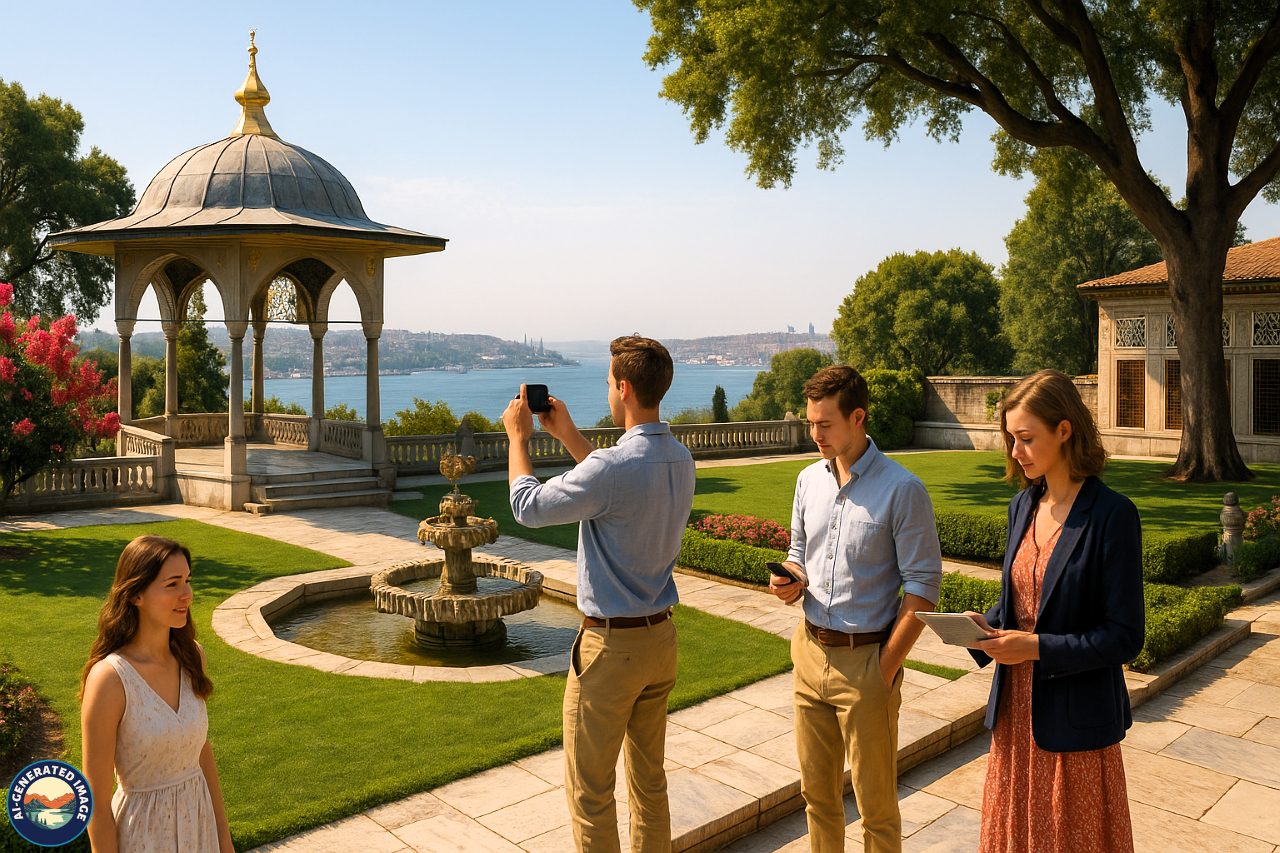
The outermost gardens and pavilions offer peace and panoramic views. Notable spots include:
-
Baghdad Kiosk:
-
Built to commemorate the capture of Baghdad.
-
Iftar Pavilion:
-
Where the sultan would break his fast during Ramadan.
These serene spaces served as retreats for reflection and celebration.
Visitor Information
Getting There
Topkapi Palace is situated in Istanbul’s historic Sultanahmet area. It’s easily accessible by public transport:
-
Tram Line T1:
-
Get off at Sultanahmet station.
-
On foot:
-
A short walk from the Hagia Sophia and the Blue Mosque.
Timings and Ideal Visiting Hours
-
Open daily except Tuesdays
-
Operating hours: 9:00 AM to 6:00 PM (last entry 5:00 PM)
-
Best time to visit:
-
Early morning on weekdays to avoid heavy crowds
Tickets and Entry Fees
-
Standard entry includes access to courtyards and museum sections.
-
The Harem section requires a separate ticket.
-
Museum Pass Istanbul:
-
A great option if visiting multiple sites in the city.
Tour Options
Visitors can choose:
-
Official guided tours
-
Self-guided tours with an audio device
-
Private guided tours, which provide in-depth storytelling and historical context
Tips for a Fulfilling Visit
-
Plan your time wisely:
-
Allocate 2–4 hours for a complete visit.
-
Dress comfortably:
-
The grounds are large and require a lot of walking.
-
Bring water:
-
There are cafés inside, but it’s good to stay hydrated.
-
Be mindful of photo restrictions, especially in religious and treasure halls.
-
Explore nearby landmarks, Such as Hagia Sophia, Blue Mosque, and Basilica Cistern—all within walking distance.
Cultural Impact and Enduring Significance
Topkapi Palace stands as a living archive of Ottoman power and sophistication. Its walls have witnessed centuries of empire-building, diplomatic intrigue, and religious reverence. The design of the palace influenced later Islamic architecture in the region and inspired works in literature, art, and even modern television dramas.
Today, Topkapi not only serves as a museum but also as a symbol of Istanbul’s complex, layered history—a bridge between past and present.
Conclusion
Topkapi Palace is far more than a tourist attraction. It’s a remarkable historical experience that takes you through centuries of grandeur, governance, and grace. From its serene gardens and ornate tiles to its priceless relics and hidden quarters, the palace offers a unique blend of artistry and authority.
Whether you’re a history enthusiast, an art lover, or simply a curious traveler, exploring Topkapi Palace is a journey into the heart of one of the world’s most influential empires.
FAQs
Does the Topkapi Palace ticket include access to the Harem?
No, the Harem requires a separate ticket. It’s highly recommended for those wanting a deeper look at royal life.
How much time should I allocate for a visit?
Plan to spend at least 2–3 hours, more if you’re also exploring the Harem and taking a guided tour.
What is the most notable treasure at the palace?
The Topkapi Dagger and the Spoonmaker’s Diamond are two of the most famed artifacts on display.
Are all areas open to the public?
Most are, but some restoration zones or conservation areas may be temporarily off-limits.
Is there a dress code at Topkapi Palace?
No official dress code, but modest attire is advisable, especially in sacred areas.
Can I take photos inside the palace?
Yes, in most places. However, photography is restricted in the Treasury and Sacred Relics chambers, and flash is typically not allowed.

